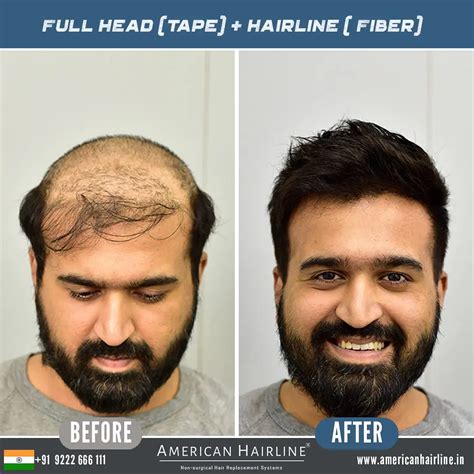Hair loss is a common concern among men, affecting over 50% of them by the age of 50. While hair loss can be hereditary, it can also be caused by various other factors, including stress, medical conditions, and lifestyle choices.

For men seeking to restore their hair, hair replacement offers a range of effective solutions. This article delves into the different types of hair replacement for men, their pros and cons, and provides practical tips and tricks for successful hair replacement.
Types of Hair Replacement for Men
- Hair Transplants:
- Follicular Unit Transplantation (FUT): Surgeons remove a strip of scalp from the donor area and divide it into individual hair follicles, which are then transplanted into the balding area.
-
Follicular Unit Extraction (FUE): Surgeons extract individual hair follicles directly from the donor area and transplant them into the balding area.
-
Non-Surgical Hair Replacement:
- Hairpieces and Toupees: These are pre-made hair pieces that are attached to the scalp using clips or tape.
- Hair Systems: Hair systems are semi-permanent attachments that are bonded to the scalp using adhesive or clips. They typically last for several months.
- Hair Fibers: Hair fibers are tiny, charged particles that cling to existing hair, creating the illusion of thicker, fuller hair.
Pros and Cons of Hair Replacement for Men
| Type | Pros | Cons |
|---|---|---|
| Hair Transplants | Permanent results | Costly, invasive surgery |
| Non-Surgical Hair Replacement | Non-invasive, affordable | Temporary results, may require frequent upkeep |
Factors to Consider When Choosing Hair Replacement for Men
- Age and health: Hair transplants are generally recommended for younger men with good overall health.
- Extent of hair loss: The type of hair replacement chosen зависит on the degree of hair loss.
- Budget: Hair transplants are more expensive than non-surgical hair replacement options.
- Lifestyle: Non-surgical hair replacement is more suitable for men with active lifestyles.
Practical Tips and Tricks for Successful Hair Replacement for Men
- Consult with a reputable hair replacement clinic for a personalized assessment and treatment plan.
- Follow the clinic’s instructions for proper care and maintenance of your hair replacement system.
- Avoid excessive heat and chemical treatments on your hair replacement.
- Use gentle shampoos and conditioners designed for hair replacement systems.
- Seek regular follow-up appointments for maintenance and adjustments.
How to Step-by-Step Approach to Hair Replacement for Men
- Consultation: Schedule a consultation with a hair replacement clinic to discuss your hair loss concerns, treatment options, and costs.
- Assessment: The clinic will conduct an examination of your scalp, determine the extent of hair loss, and recommend the most suitable hair replacement option.
- Preparation: If hair transplantation is recommended, you may need to shave or trim your hair in the donor area.
- Procedure: Hair transplants are performed under local anesthesia. Non-surgical hair replacement systems are typically attached using adhesive or clips.
- Recovery and Maintenance: Follow the clinic’s post-operative or post-insertion instructions for proper care and maintenance of your hair replacement system.
Future Trends and Innovations in Hair Replacement for Men
- Bioengineered hair: Research is underway to develop bioengineered hair follicles that can be implanted into the scalp to create permanent hair growth.
- Laser therapy: Low-level laser therapy is being explored as a potential treatment for hair loss.
- 3D printing: 3D printing is being utilized to create custom hair replacement systems that match the shape and texture of a man’s own hair.
Frequently Asked Questions about Hair Replacement for Men
- Is hair replacement permanent? Hair transplants are permanent, while non-surgical hair replacement options are temporary and require ongoing maintenance.
- Does hair replacement look natural? Modern hair replacement techniques can create results that look natural and indistinguishable from your own hair.
- Is hair replacement painful? Hair transplants involve minor discomfort, while non-surgical hair replacement is typically painless.
- How long does hair replacement take? Hair transplants typically take several hours to complete, while non-surgical hair replacement can be done in a matter of minutes.
Conclusion
Hair replacement for men offers a range of effective solutions to restore hair loss and improve self-confidence. By carefully considering the different types of hair replacement, their pros and cons, and following practical tips and tricks, men can achieve successful hair replacement outcomes. As research continues to advance, innovative technologies are emerging to provide even more effective and natural-looking hair replacement options in the future.
